 by "ttyymmnn" (ttyymmnn)
by "ttyymmnn" (ttyymmnn)
Published 08/22/2017 at 12:35
 by "ttyymmnn" (ttyymmnn)
by "ttyymmnn" (ttyymmnn)
Published 08/22/2017 at 12:35
Tags: Planelopnik
; planelopnik history
STARS: 13
Welcome to This Date in Aviation History , highlighting milestones, important historical events and people in aviation and spaceflight from August 19 through August 22.
!!! UNKNOWN CONTENT TYPE !!!
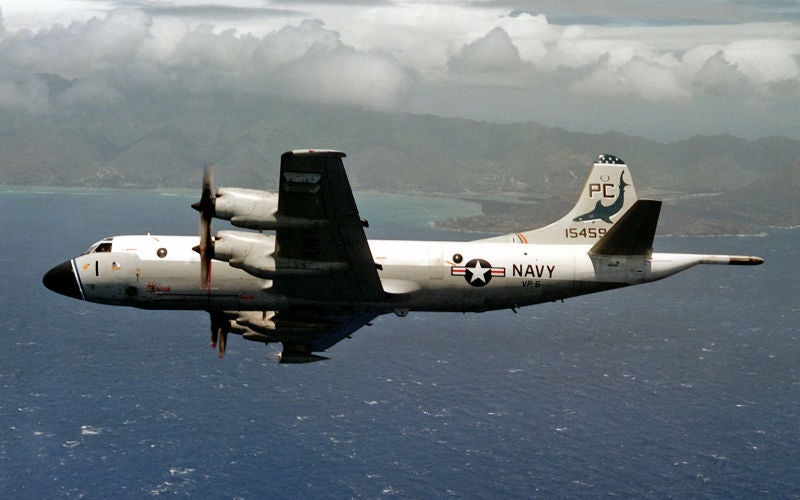
August 19, 1958 – The first flight of the Lockheed P-3 Orion. The modern carrier battle group is one of the most potent assemblages of warships ever put together, but in spite of all that firepower, it remains vulnerable to attack from submarines. Since the U-Boats of WWI, navies have struggled to find the subs before the subs find them, and aircraft have come to play a vital role in submarine detection and attack. Following WWII, the US Navy fielded its first dedicated antisubmarine warfare (ASW) aircraft with the hunter-killer team of the Grumman AF Guardian . That two-aircraft system was followed by the Grumman S-2 Tracker , the first purpose-built ASW aircraft that was large enough to carry both the equipment to detect submarines and the weapons to destroy them. The Guardian and Tracker were both carrier-based aircraft and, in August 1957, the Navy issued a call for design proposals to meet Type Specification 146 for a new land-based aircraft to fulfill the ASW role, complementing the Lockheed P-2 Neptune and replacing the Martin P5M Marlin flying boat. To meet their needs as quickly as possible, the Navy encouraged manufacturers to modify an aircraft already in production to reduce both development time and costs. Concurrent with the Navy request, Lockheed was working on the L-188 Electra , a four-engine turboprop that carried about 100 passengers and was the first large turboprop airliner in the US when it made its maiden flight in December of 1957. Lockheed proposed adapting the Electra for the ASW role, an idea that was accepted by the Navy, and a contract was awarded in May 1958. Production began immediately on a flying prototype, and the first Orion carried a mock-up of the Magnetic Anomaly Detection (MAD) boom in the rear of the aircraft and was figged with a simulated weapons bay. The aircraft gave the Navy a good idea of the feasibility of the design, but the new sub hunter still looked very much like an Electra.
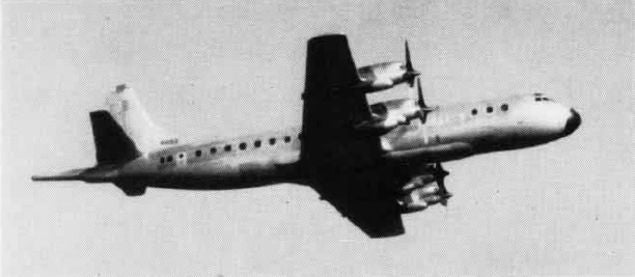
Following the maiden flight of the prototype, the Orion entered production, with the first operational aircraft making its maiden flight in November 1959. While the P-3 retains the wings, tail, basic structure and engines of the Electra, the fuselage was shortened, a weapons bay was added, and upgrades were made to the avionics. Four
Allison T56
turboprop engines take the Orion to a top speed of 411 knots (about 466 mph) with a combat radius of over 1,500 miles. Once on station, the Orion can loiter for up to three hours at 1,500 feet. If an enemy sub is detected, 10 wing stations and 8 internal bomb bay stations can hold up to 20,000 pounds of air-to-surface missiles, depth charges, mines, torpedoes or sonobuoys. The Orion can also carry the
B57 nuclear bomb
, though that capability was retired in 1993. The P-3 was introduced in 1962, and its primary mission was to track Soviet submarines and destroy them if the Cold War suddenly became hot. Patrolling Orions were often shadowed by opposing aircraft and, in one high-profile
incident
on April 1, 2001, an Orion patrolling near China was struck by a Chinese
Shenyang J-8
fighter, causing the loss of the fighter. The Orion was forced to land on the Chinese Island of Hainan, leading to an international incident that was eventually resolved with the release of the Orion and its crew and the return of the aircraft. A total of 757 Orions have been produced, a number which includes 107 aircraft built under license by Kawasaki in Japan. They are operated by a number of export countries, including Iran, who received its aircraft when Iran was still allied with the US. After more than 50 years of service, the Orion soldiers on, but it is in the process of being replaced by the
Boeing P-8 Poseidon
, another sub hunter derived from a civilian airliner, the
Boeing 737
.
(Top photo by PHAN J. Mason, US Navy; prototype photo via US Navy)
!!! UNKNOWN CONTENT TYPE !!!
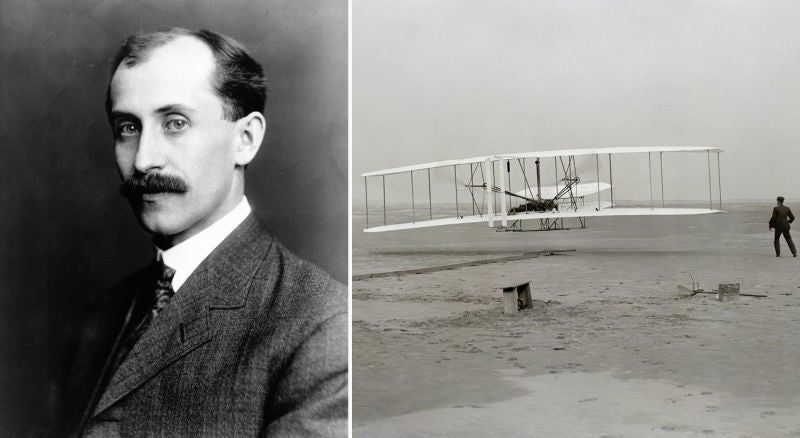
August 19, 1871 – The birth of Orville Wright. Orville Wright was one of seven children born to Milton Wright and Susan Koerner. Wilbur, his older brother, was born on April 16, 1867 near Milville, Indiana, and Orville, four years his junior, was born in Dayton, Ohio, where much of their groundbreaking work in powered flight took place. When Orville was just 8 years old, his father presented him and his brother with a toy helicopter powered by a rubber band. The two were fascinated with it and, when it broke, they built their own. That simple toy inspired the brothers to a lifelong fascination with flight. Neither boy finished high school, and Orville’s first foray into business was as a printer. He built his own press, but then the two brothers decided to capitalize on the bicycle craze sweeping the nation and started their own bicycle repair shop, eventually producing their own bicycles. In 1899, Orville and Wilbur fully turned their attention to aviation, requesting publications about early pioneers of flight from the Smithsonian Institution. From the beginning, the two focused on the difficult problem of flight control, working on a system that warped the wings to control flight. Beginning in 1900, the brothers built on the work of Otto Lilienthal and designed a series of gliders to test their theories. They even went so far as to build their own wind tunnel in their bike shop to test their designs. Their breakthrough came in 1902, when they developed a means to control their gliders in all three axes of flight: roll, pitch, and yaw . The brothers also made a breakthrough when they conceived of the propeller as a spinning wing rather than something more akin to a boat screw. Now, they were ready to try powered flight. But they needed a suitably light and powerful engine, and they turned to perhaps the greatest unsung hero of the dawn of aviation, their shop mechanic Charlie Taylor . Taylor, with guidance from the Brothers, built the water-cooled four-cylinder inline engine that would power the Wright Flyer . To save weight, the block was made from cast aluminum, a first for the day. The chains used to turn the propellers were similar to those used on bicycles, but were actually heavy-duty drive chains produced for use in cars. The Brothers moved their operation to Kill Devil Hills, North Carolina, near Kitty Hawk, where steady winds and tall dunes would aid their attempts. After a toss of a coin, it was Orville who made the flight on the morning of December 17, 1903 that changed the world. Orville’s flight lasted just 12 seconds, and covered 120 feet at a speed of 6.8 mph, but that brief flight ushered in the age of the airplane. Following their initial successes, the Brothers went about the task of proving their achievements to the world, and legally protecting their inventions and discoveries with patents. By 1908, they were ready to prove their invention to a skeptical world, doing so with a series of demonstration flights in France flown by Wilbur, and flights made by Orville to demonstrate the Flyer to the US Army. The pair faced numerous challenges to their patents, particularly by Glenn Curtiss , and by 1914, the Wrights were victorious. However, Wilbur had died two years earlier from typhoid fever. He did not live to see the success of the company he founded with his brother. Orville, who was not as skilled a businessman as Wilbur, sold the Wright Company to Glenn L. Martin in 1915, and made his last flight as a pilot in 1918 flying a Wright Model B .
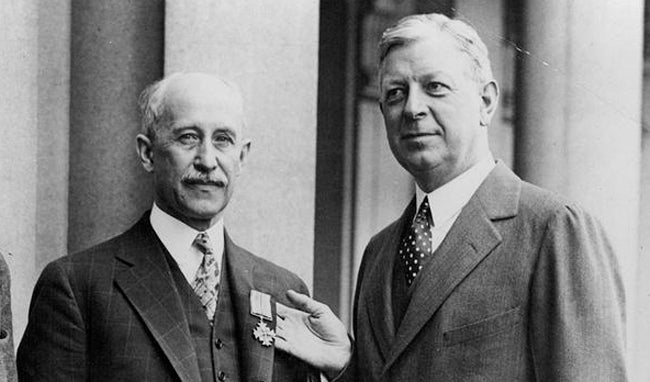
Orville continued to be a proponent of aviation, serving for 18 years with the National Advisory Committee for Aeronautics (NACA), the predecessor to the National Aeronautics and Space Administration (NASA). Orville flew for the very last time on April 19, 1944 in a Lockheed Constellation piloted by famed billionaire Howard Hughes . During the flight, Orville commented that the wingspan of the Connie, at 126 feet, was longer than his first flight 41 years earlier. Orville Wright died on January 30, 1948, three months after Chuck Yeager broke the sound barrier while flying the Bell X-1 . In a powerful testament to the pace of technological advances that began with the Wright Brothers, the world had progressed from the First Flight at less than 7 mph to surpassing Mach 1 in the span of Orville’s lifetime. To recognize their achievements, and celebrate the wonder of aviation that Wilbur and Orville gave birth to, National Aviation Day in the US is celebrated on Orville’s birthdate. (US Library of Congress photos)
!!! UNKNOWN CONTENT TYPE !!!
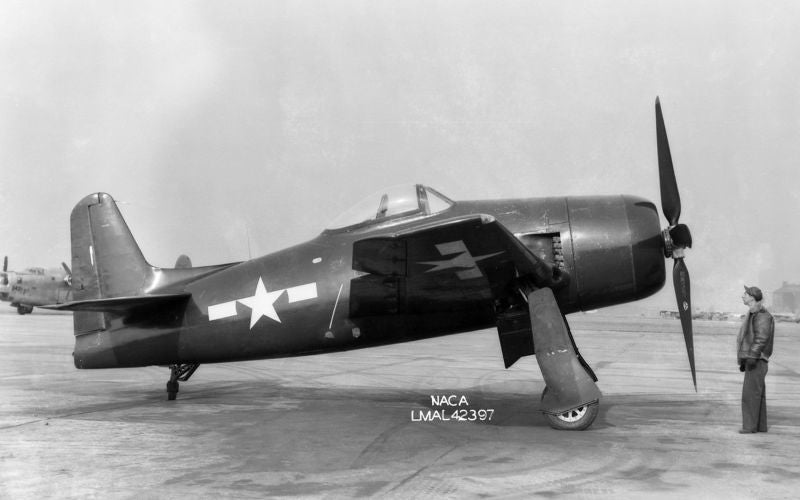
August 21, 1944 – The first flight of the Grumman F8F Bearcat.
The Second World War was not only the heyday of the piston-powered military aircraft, it was also the birth of the jet-powered aircraft. But new technologies can be slow to take hold, and while jet power would one day take over military aviation, propeller technology was reaching its zenith, and advanced fighters that had been conceived early in the war were reaching their full potential as the war drew to a close. The Grumman F8F Bearcat, which first came to the drawing board in 1942, was one of the fastest piston-powered fighters ever built, and the final piston-engined aircraft produced by the storied
Grumman Aircraft Corporation
. Following the pivotal
Battle of Midway
in June 1942, Grumman met with veterans of the battle to discuss the future of US Navy fighters. Pilots who fought against the Japanese expressed their desire for an increased rate of climb so they could get their heavier fighters above the more nimble Japanese designs. In order to do that, Grumman designed the smallest possible fighter around the largest possible engine. They began work on what the company referred to as G58 by using the same
Pratt & Whitney R-2800 Double Wasp
radial engine that was used in the
F6F Hellcat
and then worked to refine the design of the fuselage. They shortened it by 5 feet and removed the dorsal ridge, giving the new fighter a bubble canopy, the first for a US Navy fighter and a significant improvement in visibility. Thinner wings and flush rivets made the plane lighter and more aerodynamic. Where the Hellcat had a large, 3-bladed propeller, the Bearcat was given a slightly smaller, 4-bladed propeller. Further weight savings were found by making the wingtips detachable for carrier storage rather than using a heavy folding mechanism, and by reducing the fuel capacity. Thus, the Bearcat proved to be an excellent interceptor, but the Hellcat was still needed for long-range missions. By the time Grumman was finished, the Bearcat was 20% lighter, had a climb rate that was improved by 30%, and, with a top speed of 421 mph, the Bearcat was 30 mph faster than the Hellcat. Grumman also provided the Navy with an extremely powerful fighter that was still small enough to operate from the Navy’s smaller escort carriers that regularly provided air cover for troop landing operations in the Pacific. In October 1944, the Navy placed an order with Grumman for just over 2,000 Bearcats, plus another 1,800 modified aircraft to be built by General Motors. But with the end of the war coming in August 1945, the Grumman order was cut to 770 and the GM order was canceled altogether. Though the first Bearcats were delivered to combat squadrons and were operational in May 1945, the war ended before the F8F ever saw combat.
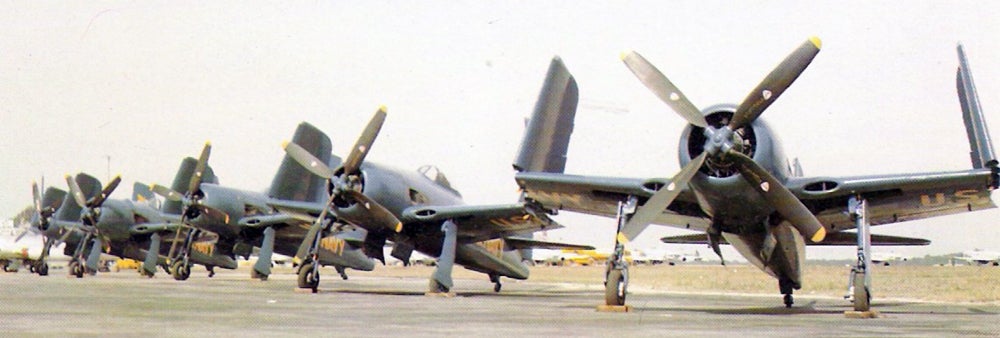
Nevertheless, the Bearcat became the principal carrier-based fighter for the US Navy after WWII and equipped 24 Navy and US Marine Corps squadrons. The Bearcat saw its first combat with the French during the First Indochina War , and a number of fighters were transferred to the Republic of Vietnam, but they were retired in 1963 before seeing extensive action in the Vietnam War. The Bearcat was also the second airplane flown by the US Navy’s Blue Angels flight demonstration squadron after the Grumman F6F Hellcat, and its size, power and maneuverability made it a popular aircraft among air racers after the war. (NASA Photo; US Navy photo)
!!! UNKNOWN CONTENT TYPE !!!
!!! UNKNOWN CONTENT TYPE !!!
!!! UNKNOWN CONTENT TYPE !!!
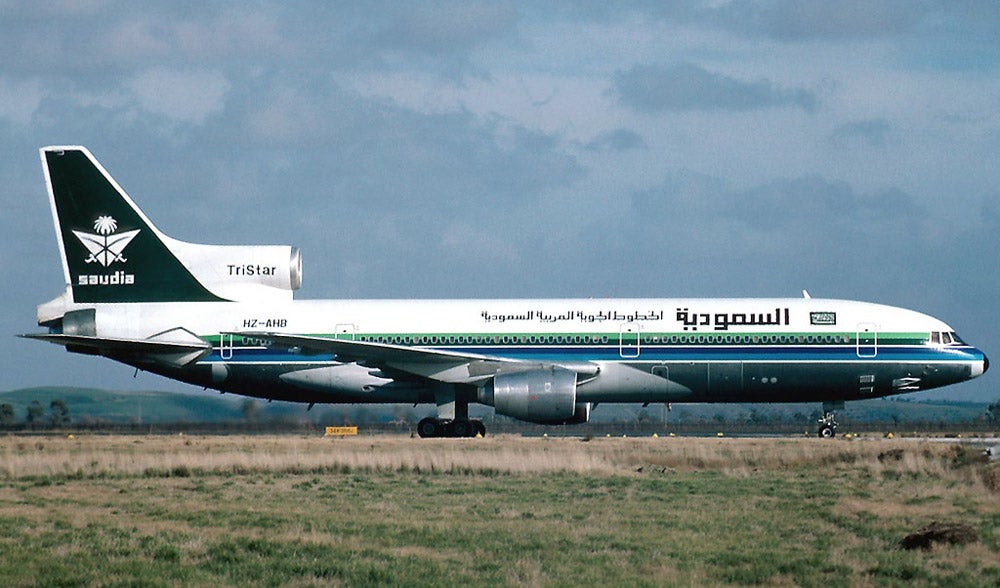
August 19, 1980 – All passengers and crew of Saudia Flight 163 die from a fire after the plane makes a successful emergency landing. Saudia Flight 163 (HZ-AHK) was regularly scheduled Lockheed L-1011 TriStar service from Riyadh International Airport to Jeddah, Saudi Arabia. Seven minutes after takeoff, a fire broke out in the cargo hold and the passenger compartment filled with smoke and the fire burned through aft passenger compartment floor and the engine control cables for the center engine. Despite this, the crew managed to return to Riyadh and land safely, but rescue crews did not open the doors to the aircraft for 23 minutes, during which time all the passengers were overcome by smoke or fire. 287 passengers and 14 crew were killed, making it the second worst death toll in any single aircraft accident after Turkish Airlines Flight 981 , the worst incident ever involving an L-1011, and the deadliest aviation disaster that did not involve a crash or breakup of any kind. (Photo—not accident aircraft—by Alain Durand via Wikimedia Commons )
!!! UNKNOWN CONTENT TYPE !!!
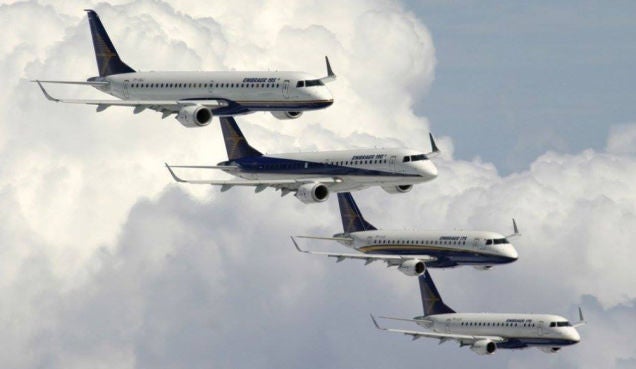
August 19, 1969 – Aircraft manufacturer Embraer is founded by Brazil’s Ministry of Aeronautics. Empresa Brasileira de Aeronáutica was originally founded as a government-owned corporation as Brazil sought to gain a foothold in aircraft manufacturing and reduce its reliance on foreign aircraft manufacturers. Embraer’s first aircraft was the EMB 110 Bandeirante , a 21-passenger twin-turboprop developed for civilian and military customers. In 1994, Embraer became a private company, though the government retains a share of the company, and it has expanded into the third-largest airplane manufacturer in the world behind Boeing and Airbus, with production facilities in the United States and China. (Photo via Embraer)
!!! UNKNOWN CONTENT TYPE !!!
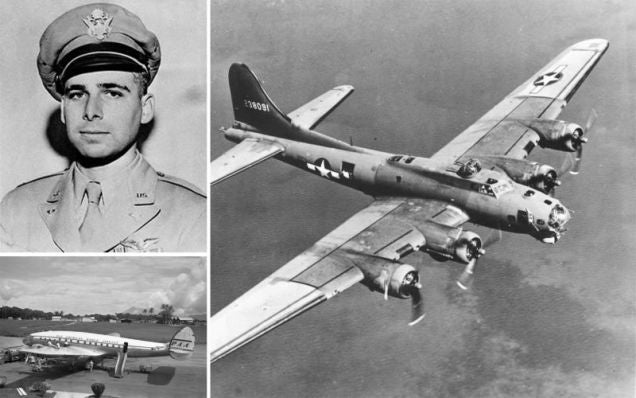
August 19, 1921 – The birth of Gene Roddenberry.
Though Roddenberry is best known as a television producer and screenwriter and the creator of the
Star Trek
series, his early life was dominated by a career in aviation. Roddenberry was born in El Paso, Texas, and earned his pilot’s license through the Civilian Pilot Training Program sponsored by the US Army Air Corps. He enlisted just 11 days after the Japanese attack on Pearl Harbor, eventually completing 89 combat missions piloting a
Boeing B-17 Flying Fortress
and earning the
Air Medal
and the
Distinguished Flying Cross
. Following the war, Roddenberry continued flying as an international airline pilot with
Pan Am
before retiring from aviation in 1948. Roddenberry died on October 24, 1991 at the age of 70.
(Roddenberry and B-17 photo via US Air Force; Pan American Airways Constellation photo by
Andy Christensen
)
!!! UNKNOWN CONTENT TYPE !!!
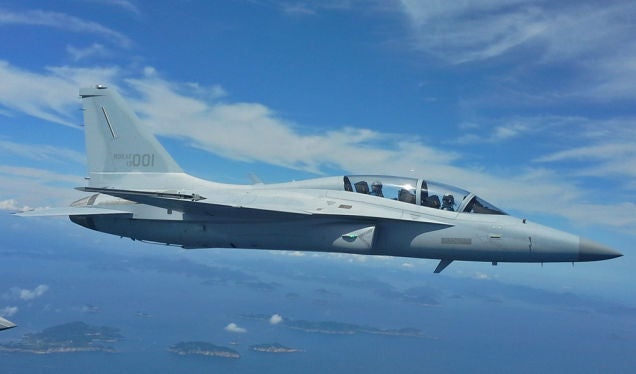
August 20, 2002 – The first flight of the KAI T-50 Golden Eagle,
a two-seat supersonic trainer developed in a partnership with
Lockheed Martin
and the first supersonic aircraft developed by South Korea. One of only handful of supersonic trainers, the T-50 entered service with the Republic of Korea Air Force (ROKAF) in 2005 and is currently operated by Korea, Indonesia, Iraq and the Philippines. An armed version has also been developed for light attack, and the T-50 is currently being considered for the US Air Force’s
T-X program
to procure a new trainer to replace the
Northrop T-38 Talon
.
(ROKAF photo via
Wikimedia Commons
)
!!! UNKNOWN CONTENT TYPE !!!
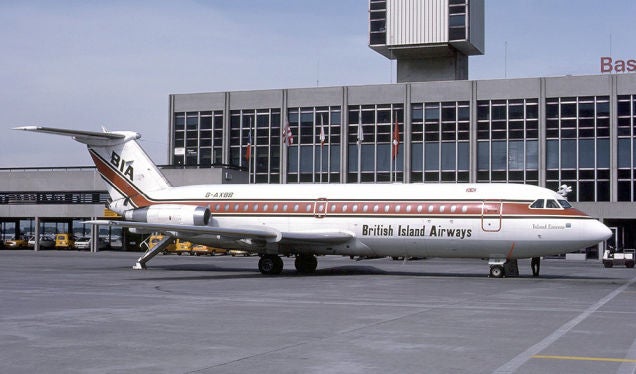
August 20, 1963 – The first flight of the BAC One-Eleven,
a short-range airliner and the second to enter service in Europe following the
Sud Avation Caravelle
. Also known as the BAC 111 and the BAC 1-11, the airliner was developed to replace the turboprop-powered
Vickers Viscount
, though early sales were dominated by purchases from US carriers. Originally designed to carry 89 passengers, subsequent variants accommodated up to 119 passengers and, with 244 produced in the UK and Romania, it became one of the most successful British airliners of its day.
(Photo by Eduard Marmet via
Wikimedia Commons
)
!!! UNKNOWN CONTENT TYPE !!!
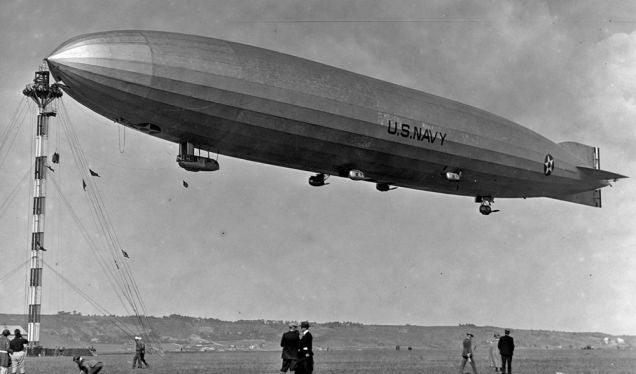
August 20, 1923 – The first flight of the rigid airship USS
Shenandoah
(ZR-1)
, the first of four rigid airships commissioned by the US Navy.
Shenandoah
was constructed at Lakehurst Naval Air Station in New Jersey and its design was based on the German
Zeppelin
LZ-96. Like its German counterpart,
Shenandoah
was intended for fleet reconnaissance duties.
Shenandoah
was also the first American airship to cross the Atlantic Ocean, but it was lost on September 2, 1925 during its 57th flight when it was torn apart by a thunderstorm over Ohio, killing 14 members of its 43-man crew.
(US Navy photo)
!!! UNKNOWN CONTENT TYPE !!!
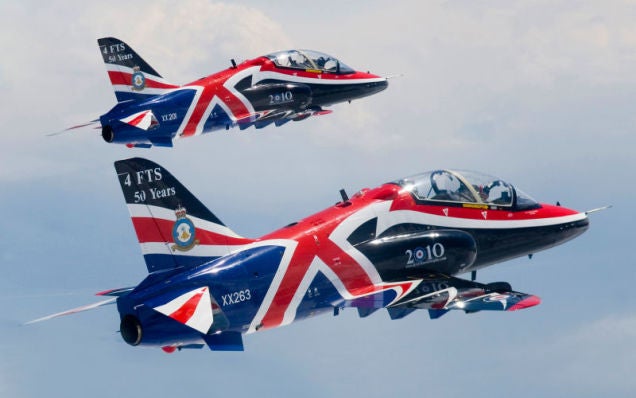
August 21, 1974 – The first flight of the BAE Systems Hawk,
a trainer developed by Hawker Siddeley (later British Aerospace) to replace the
Folland Gnat
, the
BAC Jet Provost
and still older
Hawker Hunter
trainers. The aircraft features a low cantilever wing, a single turbojet engine and a tandem cockpit. The rear seat, elevated above the student, provides excellent visibility for the flight instructor, and the single afterburning engine can take the Hawk to Mach 1.5 in a dive. The simplicity of the design also lent itself to numerous upgrades and developments, including a single-seat ground attack variant in which the forward seat is removed and the space filled with avionics, computers, radar, laser rangefinder or forward-looking infrared. Over a 1,000 have been built, and it is currently flown by 13 nations, including the US Navy, where it is known as the
McDonnell Douglas T-45 Goshawk
.
(Photo by Cpl Paul Oldfield/MOD via
Wikimedia Commons
)
!!! UNKNOWN CONTENT TYPE !!!
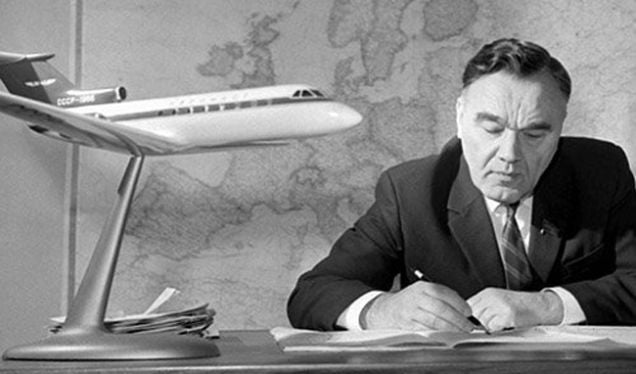
August 22, 1989 – The death of Alexander Yakovlev,
a Soviet aeronautical engineer and founder of the Yakovlev Design Bureau, where he served as chief designer until his retirement in 1984. Yakovlev was born in Moscow on April 1, 1906 and began his design work as part of the
Zhukovsky Air Force Military Engineering Academy
. His design bureau produced a large number of fighter aircraft for Russia during WWII, such as the
Yak-1
,
Yak-3
and highly successful
Yak-9
. Yakovlov served under
Joseph Stalin
as Vice-Minister of Russia’s Aviation Industry until 1946, and also designed Russia’s first jet powered fighter, the
Yakovlev Yak-15
.
(Photo author unknown)
!!! UNKNOWN CONTENT TYPE !!!
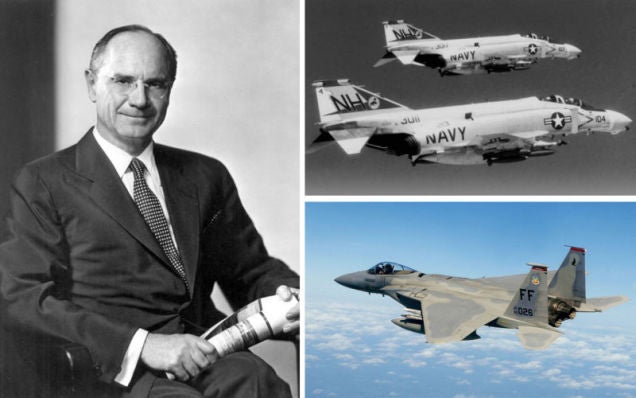
August 22, 1980 – The death of James McDonnell. Born on April 9, 1899 in Denver Colorado, McDonnell was one of America’s great aviation pioneers and aircraft producers. He began his design career in 1928, setting up J.S. McDonnell & Associates where he built his first aircraft. In 1938, he founded the McDonnell Aircraft Corporation and provided the US with some of its most iconic military aircraft, including the FH Phantom , the US Navy’s first purely jet-powered fighter, and the F-4 Phantom II , one of the era’s greatest all-weather fighter interceptors. His company also built the Mercury and Gemini space capsules. In 1967, McDonell Aircraft merged with Douglas Aviation to form McDonnell Douglas, and the new company went on to create still more great aircraft, such as the DC-10 airliner and the F-15 Eagle . McDonnell was awarded the National Academy of Sciences Award in Aeronautical Engineering in 1980. (McDonnell photo via Encyclopedia of Arkansas ; F-4 photo via US Navy; F-15 photo via US Air Force)
!!! UNKNOWN CONTENT TYPE !!!
!!! UNKNOWN CONTENT TYPE !!!
!!! UNKNOWN CONTENT TYPE !!!
!!! UNKNOWN CONTENT TYPE !!!
!!! UNKNOWN CONTENT TYPE !!!
!!! UNKNOWN CONTENT TYPE !!!
!!! UNKNOWN CONTENT TYPE !!!
If you enjoy these Aviation History posts, please let me know in the comments. And if you missed any of the past articles, you can find them all at Planelopnik History . You can also find more stories about aviation and aviators at Wingspan and Planes You’ve (Probably) Never Heard Of .
!!! UNKNOWN CONTENT TYPE !!!
 "MonkeePuzzle" (monkeypuzzle)
"MonkeePuzzle" (monkeypuzzle)
08/22/2017 at 12:48, STARS: 1
but rescue crews did not open the doors to the aircraft for 23 minutes, during which time all the passengers were overcome by smoke or fire. 287 passengers and 14 crew were killed, making it the second worst death toll in any single aircraft accident after Turkish Airlines Flight 981 , the worst incident ever involving an L-1011, and the deadliest aviation disaster that did not involve a crash or breakup of any kind.
A: what was teh reasoning behind not opening the doors for so long?
B: that link about flight 981 goes to the Air Wolf IMDB page
 "Jcarr" (jcarr)
"Jcarr" (jcarr)
08/22/2017 at 12:50, STARS: 2
Fun fact: The T56 on the Orion is installed in an inverted position relative to its position on a C-130.
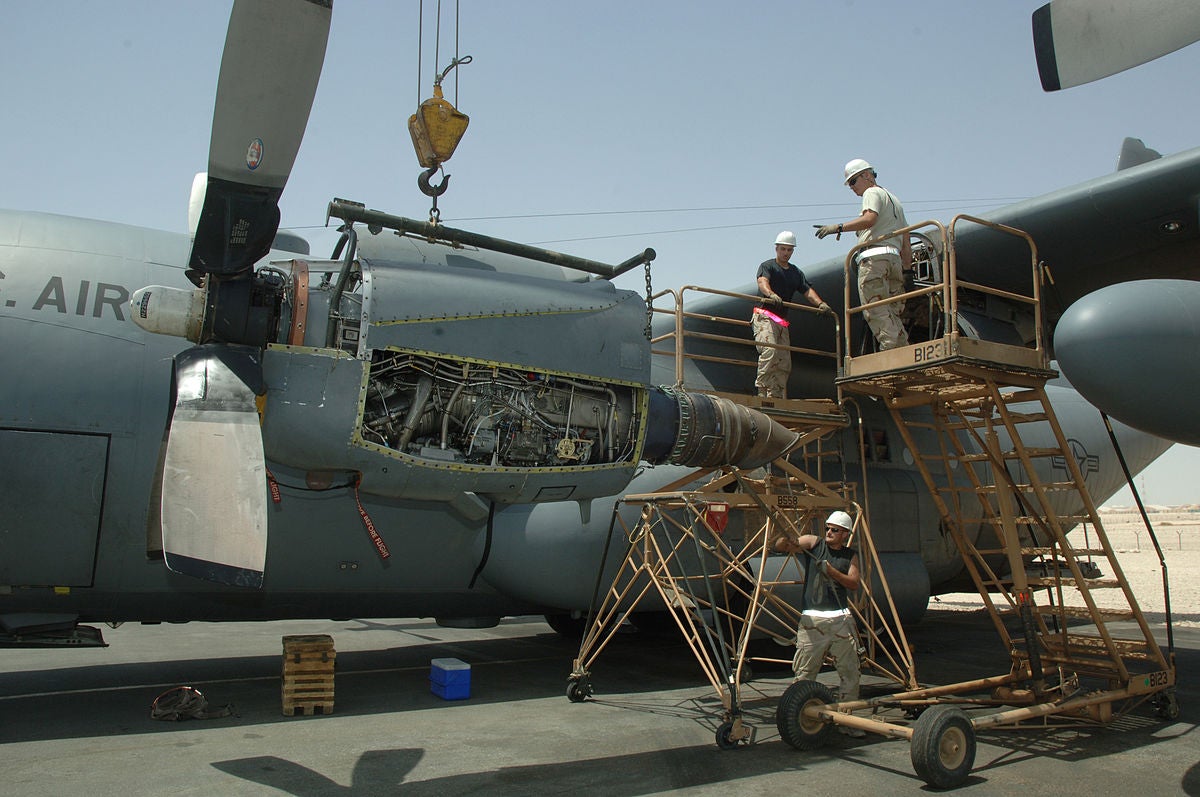
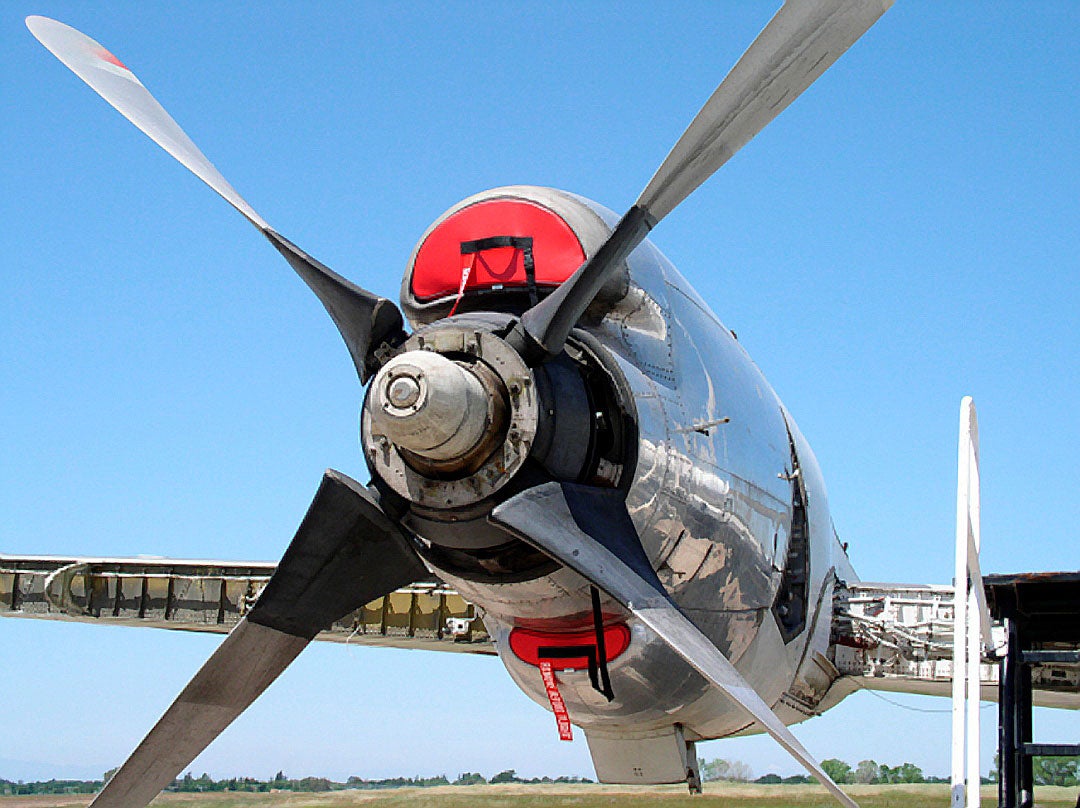
 "Yowen - not necessarily not spaghetti and meatballs" (yowen)
"Yowen - not necessarily not spaghetti and meatballs" (yowen)
08/22/2017 at 12:51, STARS: 0
A: I’m curious too! It seems crazy! Were they worried to fuel the fire with more oxygen? Maybe best to let the smoke and all the breathing/alive people suffocate the fire!?
B: Ha, there was a bit in the last post about the helicopter that was used for Airwolf.
 "Chariotoflove" (chariotoflove)
"Chariotoflove" (chariotoflove)
08/22/2017 at 13:18, STARS: 1
May The Great Bird of The Galaxy bless this post.
 "WilliamsSW" (williamssw)
"WilliamsSW" (williamssw)
08/22/2017 at 13:33, STARS: 1
The aircraft used the whole runway and taxied off of it, parking far away from where rescue crews were. The engines were left running and the cabin was still pressurized - all this with no visible fire from the outside.
Seems likely that the crew was incapacitated by then, or they would have shut down engines and depressurized.
 "ttyymmnn" (ttyymmnn)
"ttyymmnn" (ttyymmnn)
08/22/2017 at 16:33, STARS: 0
Yup. It basically sits on top of the wing rather than hangs from it. I’d love to know the design decision that went into that one.
 "ttyymmnn" (ttyymmnn)
"ttyymmnn" (ttyymmnn)
08/22/2017 at 16:34, STARS: 1
WilliamsSW answered the first part. Thanks for letting me know. I’ll fix the link.
 "Jcarr" (jcarr)
"Jcarr" (jcarr)
08/22/2017 at 16:36, STARS: 1
I feel like I remember reading about that once upon a time (which is how I remembered), but I don’t recall when or where.